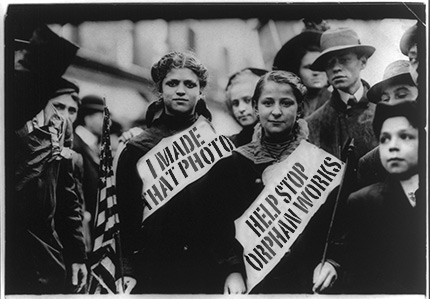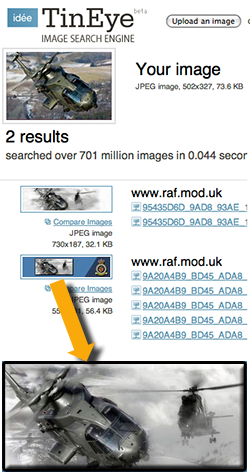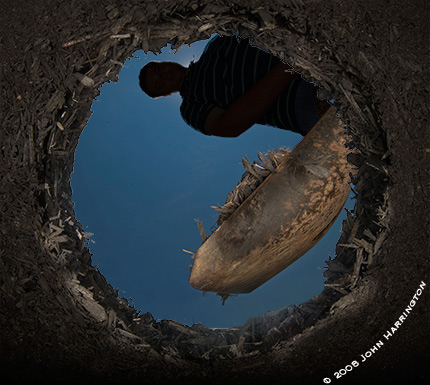 There's a lot going on with Orphan Works behind the scenes. ASMP reported in their member announcement "...the House version of the orphan works bill is expected to go to mark-up very soon, perhaps this week or next," and I have heard that Sen. Sam Brownback has placed a hold on the Senate version of the bill. For how long that hold is, no one knows. That said, both ASMP and I agreed while on stage at the Microsoft Pro Photo Summit last week - and that was that this bill is not likely to make it through the legislative process this session, before dying.
There's a lot going on with Orphan Works behind the scenes. ASMP reported in their member announcement "...the House version of the orphan works bill is expected to go to mark-up very soon, perhaps this week or next," and I have heard that Sen. Sam Brownback has placed a hold on the Senate version of the bill. For how long that hold is, no one knows. That said, both ASMP and I agreed while on stage at the Microsoft Pro Photo Summit last week - and that was that this bill is not likely to make it through the legislative process this session, before dying.
Engraved beneath a statue on the north entrance to the National Archives on Pennsylvania Ave, is the phrase "What is Past is Prologue", and that surely applies to Orphan Works legislation. Whatever changes are affected this session will be fodder for the resurected version of the legislation when everything starts anew in the next session, sometime in January or February. That's one thing you can count on when it comes to Orphan Works. It will rear it's ugly head again and again - it's the werewolf of legislation.
To that end, the Illustrator's Partnership has sent out a missive with a great many Q&A's - their version of a "Frequently Asked Questions" (FAQ) for Orphan Works.
With their permission, I am posting here what they wrote:
FROM THE ILLUSTRATORS' PARTNERSHIPWe've had word that the House Judiciary Committee may mark-up the Orphan Works Bill this week. This is the session where Committee Members will propose, accept and reject amendments to H.R. 5889. After markup, the bill could be reported out of the House Committee and go to the floor for a vote.
We've submitted several critical amendments for consideration: These would limit the scope of the bill to affect only true orphaned work. Unless such amendments are adopted, we believe the bill should not be reported out until its impact on small businesses can be determined. Here's our summary of the issues at stake in the House version of this bill:
(Continued after the Jump)
Q What is the Orphan Works Act?A: A proposed amendment to copyright law that would impose a radically new business model on the licensing of copyrighted work.
Q: How would it do that?A: It would force all creators to digitize their life's work and hand it over to privately-owned commercial databases or see it exposed to widespread infringement by anyone, for any purpose, however commercial or distasteful.
Q: How would it hurt me if I didn't register my work?A: The bill would let infringers rely on for-profit registries to search for your work. If your work is not in the databases, it's a potential "orphan."
Q: What about my unpublished work?A: The bill would apply to any work, from professional paintings to family snapshots, home videos, etc., including published and unpublished work and any work ever placed on the internet.
Q: How would these databases work?A: No one has yet unveiled a business plan, but we suspect they'd operate like stock houses, promoting themselves as one-stop shopping centers for licensing art. If you've registered your work with them, they'll probably charge you maintenance fees and commissions for clearing your work. If you're a publisher or art director, they'll probably charge you search fees. If you're an infringer, they'll probably charge you a search fee and issue orphan certificates for any unregistered work you'd like to infringe. We assume different registries may have different terms, and any start-up terms will of course be subject to change.
Q: How will the bill affect the market for commissioned work? A: It will be a gold mine for opportunists, favoring giant image banks over working artists. Some companies will probably sell access to orphans as royalty-free work -- or they'll harvest orphans and bundle them for sale as clip art. Other companies can harvest orphans, alter them slightly to make "derivative works" and register the derivatives as their own copyrighted product. Freelancers would then be forced to compete against their own lost art - and that of their colleagues - for the new commissions they need to make a living.
Q: But the bill's sponsors say the bill is just a small adjustment to copyright law.A: No, it's actually a reversal of copyright law. It presumes that the public is entitled to use your work as a primary right and that it's your legal obligation to make your work available.
Q: But isn't the House bill an improvement over the Senate version?A: Only for those who intend to operate commercial databases. These registries will exist to make money. To make money, they'll have to do a lively business in clearing work for infringements. That means making their databases infringer-friendly.
Q: But isn't the House bill better because it requires an infringer to file a Notice of Use, documenting their intent to infringe? A: The House bill creates a very low threshold for infringers to meet. They'd only have to file a text description (not the image itself) of the work they want to infringe, plus information about their search and any ownership information they've found.
Q: But won't that let artists consult the archive to see if their work has been infringed?A: No, as currently written, the Notice of Use is a dark archive, which means you won't have access to it. If someone infringes your work and has filed a Notice of Use, you wouldn't know about it.
Q: Then how would I know if my work is in the Dark Archive?A: You wouldn't, unless a.) you discover you've been infringed; b.) you sue the infringer in federal court; c.) the infringer asserts an Orphan Works defense. Then you can file a request to see if the infringer has filed a Notice of Use to infringe your work.
Q: Then what good does it do me for the infringer to file a Notice of Use?A: It's of no probative value to you at all unless you go to court. And if you do, you'd better be sure of winning because otherwise, without the possibility of statutory damages and attorneys' fees, it will be too expensive for you to sue. If the Notice of Use helps anyone, it actually helps the infringer: it lets him prove in court that he followed the prescribed protocol to "legally" infringe your work.
Q: Then shouldn't we ask Congress to change the Dark Archive to an open one? A: This would still place an impossible burden on you. Can you imagine routinely slogging through a "lost and found" containing millions of text descriptions of works to see if something sounds like one of the hundreds or thousands of illustrations you may have done?
Q: So should the infringement archive be changed to display images rather than text descriptions? A: If so, you'd have a come-and-get-it archive for new infringers to exploit works that have already been identified as orphans by previous infringers.
Q: The bill's sponsors say the House version includes specific instructions on the requirements for diligent searches. A: No, read the bill. It's full of ambiguous terms like "reasonable" and "diligent" that can only be decided by courts on a case-by-case basis. That could take a decade of expensive lawsuits and appeals. How many millions of copyrights will be orphaned before we learn how the courts ultimately define these vague terms?
Q: Then what can we do to improve this bill?A: We don't believe the bill can be patched up to mitigate its harm to creators. The Orphan Works matter should be solved with carefully defined expansions of fair use to permit reproduction by libraries and archives, or for family photo restoration and duplication. Narrow exceptions like these would also meet the needs of other orphan works usage without violating artists' rights as defined by the 1976 Copyright Act, The Berne Convention and Article 13 of the TRIPs Agreement. These copyright-related international trade treaties are not just a matter of law. They codify longstanding business practices that have passed the test of time.
Q: What can we do now to oppose this legislation?A: If you're opposed to the House bill in its current form, contact members of the full House Judiciary Committee. Ask them to adopt our amendments limiting the scope of the bill to affect only true orphaned work. Tomorrow, we'll email you a short basic letter which you may use as a template.
--Brad Holland and Cynthia Turner, for the Board of the Illustrators' Partnership
Over 60 organizations are united in opposing this bill in its current form. Illustrators, photographers, fine artists, songwriters, musicians, and countless licensing firms all believe this bill will harm their small businesses.
Don't Let Congress Orphan Your WorkTo use the Orphan Works Opposition Website just go to this link, put in your zip code and follow the instructions. Your letters will be addressed and sent automatically. It takes less than 2 minutes to fight for your copyright.
The Illustrator's Partnership has asked that you please post or forward this message in its entirety to any interested party.
Please post your comments by clicking the link below. If you've got questions, please pose them in our Photo Business Forum Flickr Group Discussion Threads.
[More: Full Post and Comments]
 I found myself packing up for the day at the Microsoft Pro Photo Summit last week, when I was approached by the co-founder and CEO of Idee - the makers of TinEye, Leila Boujnane. Leila wanted to chat about TinEye's capabilities, as I'd just finished talking about the problems of orphan works, and the image search technologies that were on the horizon, and I mentioned TinEye, among others, during my talk. I'd not tried TinEye, but I had heard of remarkable results by trusted colleagues of mine trying it out. So, it was serendipitous that I was now chatting with Leila.
I found myself packing up for the day at the Microsoft Pro Photo Summit last week, when I was approached by the co-founder and CEO of Idee - the makers of TinEye, Leila Boujnane. Leila wanted to chat about TinEye's capabilities, as I'd just finished talking about the problems of orphan works, and the image search technologies that were on the horizon, and I mentioned TinEye, among others, during my talk. I'd not tried TinEye, but I had heard of remarkable results by trusted colleagues of mine trying it out. So, it was serendipitous that I was now chatting with Leila. First, the expected. I looked for the first image that I had on my desktop that had seen the light of day outside of my office. And, as I've done the past two years at the Microsoft Pro Photo Summit, I was a speaker. Part of being a speaker means providing a headshot of myself, and that image was on my desktop. So, it was an easy image to choose.
First, the expected. I looked for the first image that I had on my desktop that had seen the light of day outside of my office. And, as I've done the past two years at the Microsoft Pro Photo Summit, I was a speaker. Part of being a speaker means providing a headshot of myself, and that image was on my desktop. So, it was an easy image to choose.  I thought next to my headshot, what other image might I have made that could be in circulation and was sitting on my desktop. The image that came to mind - and the first one I thought of, was an image of a Harrier jump jet (it can be seen here on the second page, lower left thumbnail corner). A search for that image yielded no results, which wasn't what upset me - it was what happened next. The second image I thought of was an image I had made for a defense contractor for a helicopter that was to be very high profile.
I thought next to my headshot, what other image might I have made that could be in circulation and was sitting on my desktop. The image that came to mind - and the first one I thought of, was an image of a Harrier jump jet (it can be seen here on the second page, lower left thumbnail corner). A search for that image yielded no results, which wasn't what upset me - it was what happened next. The second image I thought of was an image I had made for a defense contractor for a helicopter that was to be very high profile. 


